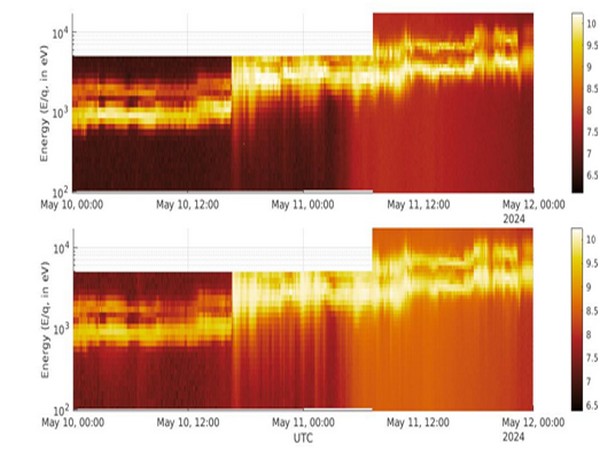
New Delhi: The Indian Space Research Organisation (ISRO) captured signatures of the recent solar eruptive events from Earth, Sun-Earth L1 Point, and the Moon.
ISRO mobilised all its observation platforms and systems to record the signatures of the powerful solar storm that impacted Earth on Saturday. Both Aditya-L1 and Chandrayaan-2 have made observations and signatures have been analysed.
The X-ray payloads on-board Aditya-L1 (SoLEXS and HEL1OS) have observed the multiple X- and M-class flares from these regions during the last few days while the in-situ magnetometer (MAG) payload has also observed the events as it passed by the L1 point.
While the Aditya-L1 observes the Sun from the first Sun-Earth Lagrange point, the Chandrayaan-2 orbiter has also captured the signatures of these solar eruptive events from the lunar polar orbit. XSM has observed many interesting phenomena associated with this geomagnetic storm.
The large solar flares (> M5 class), manifested as spikes, are autonomously identified by the onboard logic of XSM, when the internal mechanism was activated to reduce the incident X-ray flux by bringing a filter in front of the detector, so as to prevent its saturation.
While the XSM primarily monitors solar X-rays, it has also provided information about the local high energy particle environment by means of counting the events when the upper level discriminator (ULD) threshold is crossed.
A powerful solar storm impacted Earth in early May 2024, triggered by the highly active region AR13664. This region unleashed a series of X-class flares and coronal mass ejections (CMEs) directed at Earth.
The resulting geomagnetic storm was the most intense since 2003 (Dst index -412 nT), causing disruptions to communication and GPS systems.
This is the biggest Geomagnetic storm since 2003 in terms of its strength, as the flaring region on the Sun was as big as the historically important Carrington event that took place in 1859. Multiple X-class flares and CMEs have hit the earth in the past few days.
This had severe effects over high latitudes where trans-polar flights are already being reported to get diverted. More events are expected in the next few days. The Indian sector got less affected as the main hit of the storm happened in the early morning of May 11, when the ionosphere has not developed fully. Also, being at lower latitudes, widespread outages haven't been reported in India. The ionosphere was very turbulent over the Pacific and American sectors.
The main punch of this event so far arrived in the early morning hours of May 11 in India, when Ionosphere was not fully developed. The GNSS network observations at the National Atmospheric Research Laboratory show decrease of the Total Electron Content (TEC) by more than 50 per cent from May 10 midnight to May 11 morning.
The Master Control Facility (MCF) team in ISRO was on alert and watchful of any Geomagnetic activity experienced by geo spacecrafts. With respect to disturbances on spacecrafts, the magnetic torquer duty cycle changes due to increased accumulation of disturbances resulted in frequent momentum dumps.
Momentum Wheel speed deviations were observed along with MTC current saturation in few spacecrafts. Spacecrafts with one-sided panel had predominant signature variations which required frequent momentum dumping.
Otherwise, overall operations were normal. No single event upsets were seen. Star Sensor (SS-2) in INSAT-3DS and Star Sensor (SS-3) in INSAT-3DR were turned off as per Mission. Other than this there has not been any major upsets or anomaly observed in any of the 30 GEO spacecrafts so far.
None of the Earth Observation Satellites of ISRO which were visible from ISRO's ground stations had any upsets or latch-ups.
During solar events like this, the energy released from the Sun heats and expands the upper atmosphere. This increased atmospheric density at satellite altitudes creates more drag on satellites, causing them to lose altitude gradually. This effect is most pronounced for satellites in low-Earth orbit.
The ISRO Navigation Centre has not noticed any significant degradation in the NaVIC service metrices till now, indicating no or negligible impact from the geomagnetic storm.